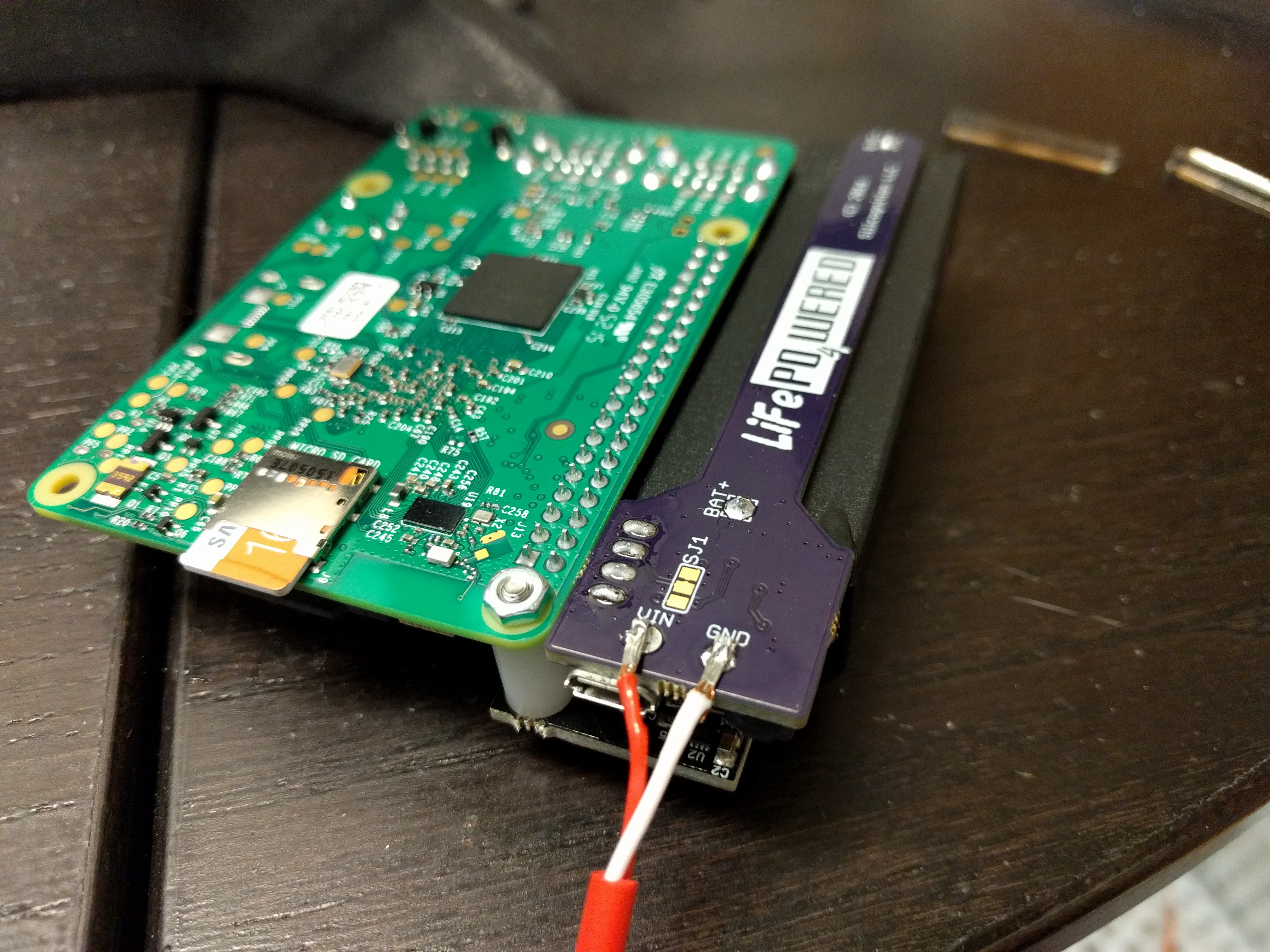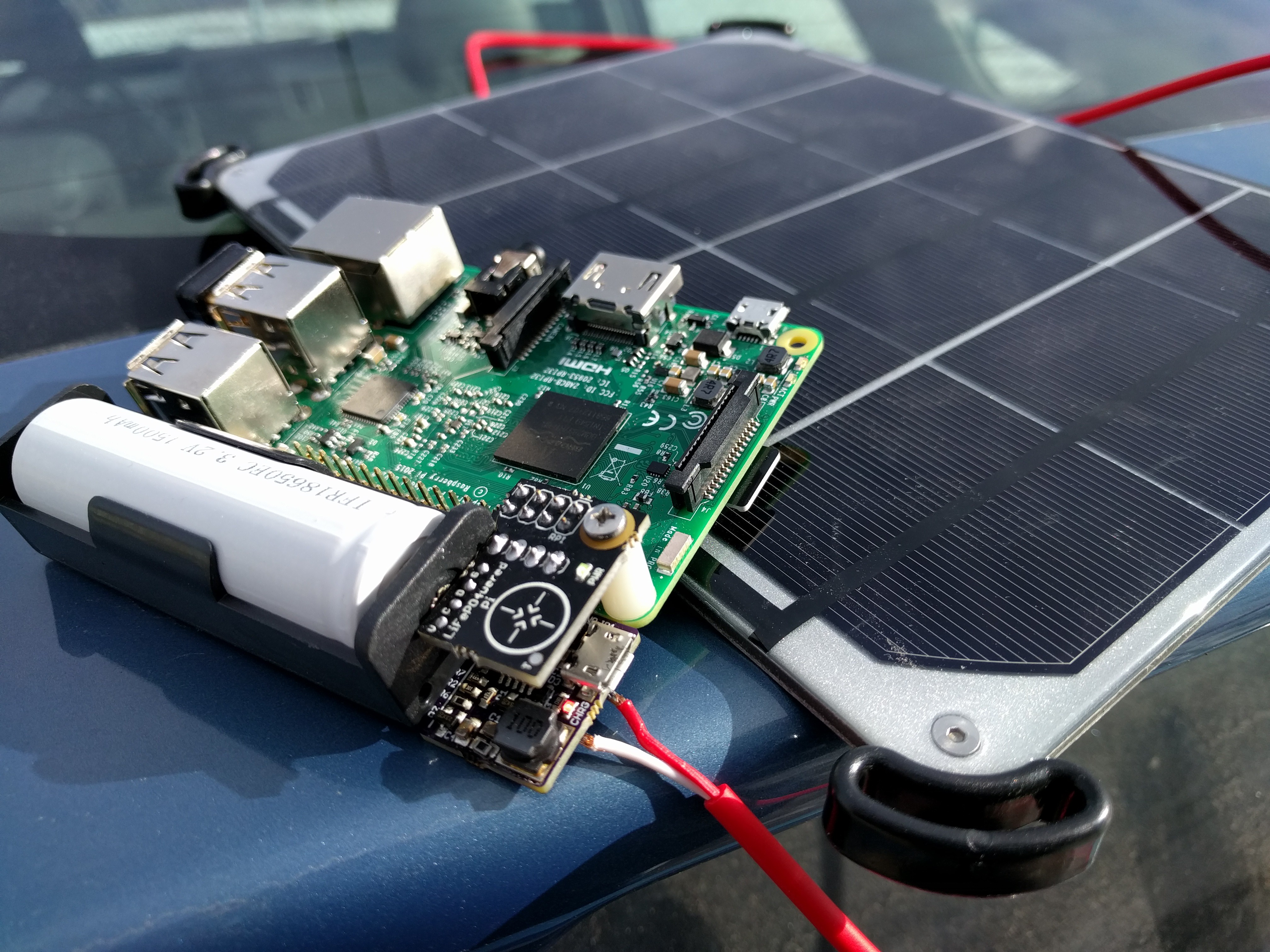One really neat feature of the LiFePO4wered/18650 that I haven't talked much about is the ability to power it from a 5-7V solar panel. I've only been able to test this just now because the component reel I was waiting for makes it possible to do this, since now the input cap is rated for 16V instead of 6.3V.
The charge controller I used has MPPT functionality with a fixed voltage set point. This means that the charger will reduce charge current to prevent the input voltage from sagging below this voltage. On the LiFePO4wered/18650 I have set this set point to 4.66V, which is a pretty decent value (not optimal but usable) for small 5-6V solar panels.
At the same time, this feature also makes it so the LiFePO4wered/18650 can dynamically adjust to the actual output capacity of a USB charger. Although reaching a maximum charge current of 1.33 A when connected to a powerful 2A USB charger, it will not overload a less capable power source such as a computer USB port. The charger will just limit the charge current when the voltage starts to droop. This is why the MPPT set point is at 4.66V: a USB power source's minimum voltage can be 4.75V so we need some headroom.
The LiFePO4wered/18650 has convenient solder pads on the bottom where you can connect an input source other than micro USB:

And here's the system out in the sun, charging from a 6W Voltaic Systems panel and powering a Pi 3 using the #LiFePO4wered/Pi power manager:

I will have to do some more testing to determine what acceptable limits on the input voltage are. The ceramic input cap loses capacity when under higher bias voltage and the peak-to-peak ripple on the charge current will get worse as well, so it will likely be less than the 16V cap rating.
 Patrick Van Oosterwijck
Patrick Van Oosterwijck
Discussions
Become a Hackaday.io Member
Create an account to leave a comment. Already have an account? Log In.
This is what I've been hoping for! I bet it will work great with other outdoor sensor projects based on things like the esp8266. Solar powered diy wifi weather station for the masses
Are you sure? yes | no